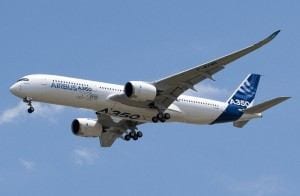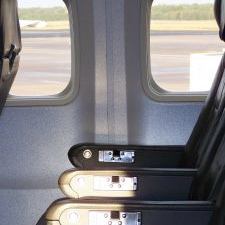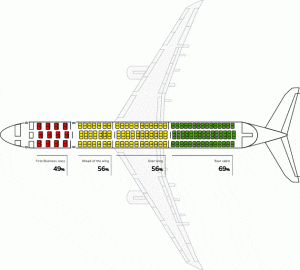Travel Tips
Reduce Your Risk: What You Can Do to Survive a Plane Crash
Even though plane crashes are statistically uncommon, they are widely feared. Take comfort in the numbers: The National Transportation Safety Board (NTSB) reports that only 1 in 1.2 million flights result in an accident. For additional reassurance, the NTSB noted that there was a 95 percent survival rate in plane crashes from 1983 to 2000. Even though the odds are in your favor, it is good to be prepared. You can even take a few measures to ensure your safety. Choosing a seat, staying alert, and being informed are all steps to ensuring survival.
Choosing a Seat
There are three major studies considered to be the cornerstones for valid crash safety studies and statistics. The first is an episode of a Discovery Channel show called “Curiosity: Inside A Plane Crash” that features a deliberate Boeing 727 crash in the Sonoran Desert in Mexico. The project was lead by Dr. Thomas Barth, an NTSB investigator and survivability expert. In the study, a remote controlled plane was equipped with crash test dummies, cameras, and sensors in order to record and determine the ferocity of the crash, and the effects it had on the “passengers” in various parts of the plane.The results showed the first 11 rows of the plane completely decimated, with a crash force of 12G coming up through the floor of the plane and into the seats and passengers. Moving towards the middle of the plane the damage lessened, while the dummies in the rear of the plane, where the crash force was only 6G, remained largely unharmed.
The study also included crash test dummies with up to 32 censors on their bodies, all in different positions, in order to measure the injury factors based on body positioning upon impact. Results showed that the dummies in the brace position (head between knees) suffered fewer injuries, while those sitting upright with their seatbelt on showed survivable injuries; however, the dummies without fastened seatbelts were either ejected from the plane or fatally injured.
What the simulated crash highlighted was that the passengers in the front of the plane, or the area commonly reserved for first class, business flyers, and economy seats, would not have survived. The passengers in the middle of the plane may have sustained major injuries, but some would survive. In the back of the plane, however, most passengers wearing their seatbelts would have walked away from the crash with minor injuries.
Critics of the study stated that the results of a single crash do not qualify as hard evidence, even though booking sites reported a decrease in the purchase of first class tickets after the episode aired.
However, when we couple the “Curiosity” findings with a report conducted by Popular Magazine on the safest seat in a plane, we come closer to determining safety protocols. In this study, conducted in 2007, researchers analyzed raw data from the NTSB on commercial jet plane crashes since 1971, with hours spent examining seating charts and survival rates. In 11 out of the 20 crashes examined, the numbers clearly showed it was safer to sit in the back of the plane. While evidence did support that the front of the plane was safer in 5 of the cases, statistically the back still wins. (The remaining 4 cases proved to be inconclusive for targeting a specific safe area.)
When the findings are put together, a seating chart can be generated that shows the rear cabin seats with a survival rate of 69%, the overwing seats showed a 56% survival rate, while the front cabin seats had only a 49% survival rate.
The third study on plane crash survival comes from Dr. Ed Galea, the Director of the Fire Safety Engineering Group at the University of Greenwich. Through analysis of over 100 seating charts from plane crashes, Professor Galea determined that passengers who chose seats within 5 rows of an exit were the most likely to survive. He also uncovered statistics that show survival may be affected by whether you choose to sit by the window or near the aisle. While most people prefer the window seat, calculations show that the aisle seat is the safer option by around 6%.
When we compare the results of all three studies, we can conclude the following the safest place to sit on a plane is in the back, within five rows of an exit, in an aisle seat. There are conflicting opinions on which criteria is more important than the other, with the Greenwich study supporting exit seats as the highest priority, and the other two studies favoring placement in the back of the plane. It is important to note that each plane crash occurs under different circumstances and therefore it is impossible to determine an indisputable safe seat, however by choosing your seat based on the above criteria, combined with awareness and education, you can prepare yourself for the worst.
Be Alert and Stay Informed
 Evidence shows that many passengers survive the initial crash, but are unable to exit the plane to safety. In the Greenwich report, in addition to studying data, Dr. Galea interviewed around 1,900 plane crash survivors and 155 crew members and found that many patients become panicked and stuck in their seats after a crash, wasting valuable escape time on trying to unbuckle their seatbelts.
Evidence shows that many passengers survive the initial crash, but are unable to exit the plane to safety. In the Greenwich report, in addition to studying data, Dr. Galea interviewed around 1,900 plane crash survivors and 155 crew members and found that many patients become panicked and stuck in their seats after a crash, wasting valuable escape time on trying to unbuckle their seatbelts.
With the 90 seconds following impact being the most crucial, it is important to be aware of how to operate the seat belt properly, in addition to knowing the exact location of the nearest exit. It is recommended that you practice unbuckling your seat belt, and count the precise number of rows between your seat and the exit in case loss of emergency lightening or smoke obstruction.
Keep in mind that wearing your seatbelt and bracing yourself for impact is crucial to increasing survival rates.
Additionally, experts report that the majority of crashes occur during the first 3 minutes of takeoff, or the last 8 minutes of landing; knowing this prepares you to pay attention to the safety demonstrations and adhere to restrictions regarding electronics and tray tables. Staying alert and responsive during takeoff and landing could be the difference between life and death. It is advised to keep your shoes on and to prepare yourself to abandon your luggage in case of an emergency. Also, staying low in the cabin if it is filled with smoke can make it easier to crawl to safety. By booking direct flights, you can also decrease your time in the danger zones of flying, increasing safety and decreasing anxiety. With the high number of plane crash survivors, it is reasonable to conclude that more fatalities could be prevented with proper education and appropriate response. Fortunately, just by reading this article you have already increased your chances of survival.
For additional information, read about the Asiana Air Crash and a Pilot’s Analysis of Potential Errors.
By Ashleigh Whelan for PeterGreenberg.com














